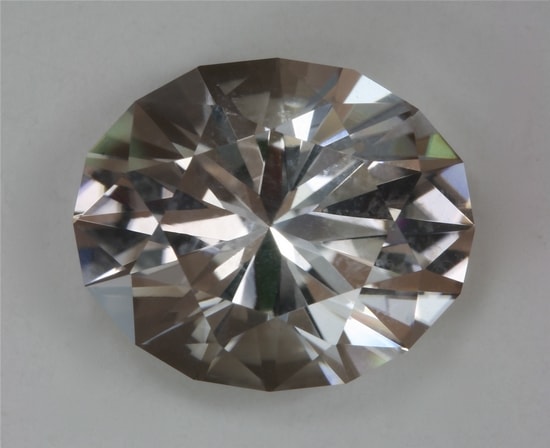I have pretty strong feelings about setting tourmaline in jewelery. I read on the internet over and over again that tourmaline has a hardness between 7 and 7.5 on the mohe’s scale. That just means that it is relatively harder than quart/sand, which is enough when it comes to durability in gemstones, in my opinion. Micro particles of sand are ubiquitous in the environment and if a gemstone is not harder than sand, special cleaning procedures (no rubbing the stone) need to be done to keep the edges of the gemstone from abrading. Now does that mean that all gemstones harder than sand are durable? The sad answer is no, some gemstones, including an assortment of tourmaline, can not stand normal physical impacts that lead to chipping even in the normal environment of a well set gemstone. The two legitimate gemstones that come to mind, that are certainly harder than quart and therefor cannot be scratched by sand, but still chip badly are CZ and zircon. So where does tourmaline fit into this picture of hard enough gemstones to resist scratching, but prone to chipping.
If you read about tourmaline anywhere on the inter net or in a book, you will generally be told that tourmaline is a gemstone with a very complex chemistry that comes from a usually inadequate list of locations and most every color. I can’t for the life of me figure out what color is missing from my collection, but few authorities want to included all colors with tourmaline. Now on top of all the colors and even crystals that multiple colors, one of the principle problem in tourmaline is partially sealed flaws. Also many of the tourmaline crystals are naturally irradiated in the pegmatite where they crystallized out of the residual from large intrusive bodies of magma. Tourmalines are also heated to improve their tone level and or color.
Now that I have given a very brief overview of factors that can effect the durability of tourmaline and how vast the world of tourmaline is, it follows the there is a wide variation in the chip resistance and durability of an individual tourmaline gemstone. Multi color gemstones tend to break where the stress is highest do to the change in color, while dark stones that have been heat to lighten them, tend to be less stable in my opinion. I would like to say that certain colors like “hot” pink tend to chip more, but I really can not. You can not tell how brittle a tourmaline gemstone is going to be by its color, but you can loop the stones to see if there are chips on the facets from cutting or any other reason. I find the keel or culet to be the most sensitive to chipping on the stones that I cut. If you find chips, the stone maybe weak and not too durable, despite its hardness..
A few more comments on opinions and experiences I have had with jewelry and tourmaline. I would not put a quality tourmaline in a ring, period, unless it was worn on special occasion to impress the world. Even with that I would have a protective setting. Also never use an ultrasonic on a tourmaline, it may make it, but why take a chance. Cleaning the gemstone with an old toothbrush (if you need to get into a setting) and rubbing alcohol works fine. Have your jewelery checked at least once a year to be sure that the prongs are tight. My goldsmith does not like to set tourmaline and either loosing a stone or having to have it reset is both sad and relatively dangerous. I have to admit that I do not ware jewelery and keep my babies in display bottles. If I did have a ring, I would probably buy a high quality synthetic ruby and put it in a gold setting. With my activities the ruby would be damaged in time and with a synthetic, I would not be destroying a beautiful work of nature.

